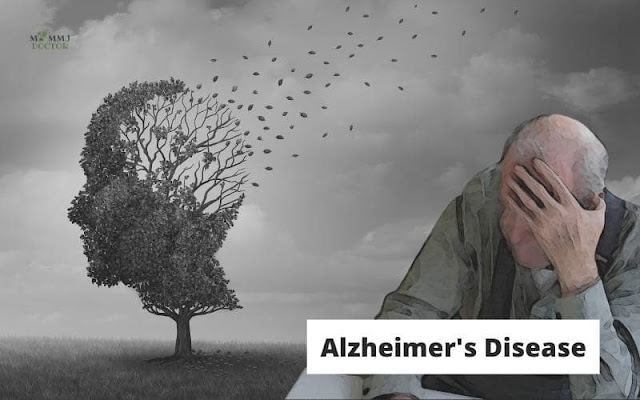Everything You Know About ALZHEIMER’S DISEASE : SYMPTOMS, CAUSES AND TREATMENT
Alzheimer's disease (AD) is the most common form of dementia, a neurologic disease characterized by a loss of mental ability severe enough to interfere with normal activities of daily living, lasting at least six months, and not present from birth. AD usually occurs in old age and is marked by a decline in cognitive functions such as remembering reasoning and planning.
The most common cause is Alzheimer's disease others include cerebrovascular disease, central nervous system infection, brain trauma or tumors,
vitamin deficiencies, anoxia, metabolic conditions, endocrine conditions, immune disorders, prion diseases,
Wernicke-Korsakoff syndrome, normal-pressure hydrocephalus, Huntington's chorea, multiple sclerosis,
and Parkinson's disease.
The Alzheimer's Association has developed a list of 10 warning signs of AD. A person with several of these
symptoms should see a physician for a thorough evaluation:
Memory loss that affects job skills
Difficulty performing familiar tasks
Problems with language
Disorientation of time and place
Poor or decreased judgment
Problems with abstract thinking
Misplacing things
Changes in mood or behavior
Changes in personality
Loss of initiative
Is Alzheimer's disease hereditary?
It is known that one variant of Alzheimer’s disease is genetic. It was in fact the type that Dr. Alzheimer first encountered in a patient. It is called Familial Autosomal Dominant Alzheimer’s (or may also be called early-onset or young-onset Alzheimer’s). Typically people get it before they reach 65 years of age. This type accounts for 5 to 10% of Alzheimer’s Disease diagnoses. The role of heredity in the majority of dementia cases is unclear. Environment and health probably play a much bigger role than genetics in these cases.
What causes Alzheimer’s disease?
Alzheimer’s disease is caused by the abnormal build-up of proteins in the brain. The build-up of these proteins — called amyloid protein and tau protein — leads to cell death.
The human brain contains over 100 billion nerve cells as well as other cells. The nerve cells work together to fulfill all the communications needed to perform such functions as thinking, learning, remembering, and planning. Scientists believe that amyloid protein builds up in the brain cells, forming larger masses called plaques. Twisted fibers of another protein called tau form into tangles. These plaques and tangles block the communication between nerve cells, which prevents them from carrying out their processes. The slow and ongoing death of the nerve cells, starting in one area of the brain (usually in the area of the brain that controls memory) and then spreading to other areas, results in the symptoms seen in patients with Alzheimer’s disease.
Treatments of Disease
However, there is no remedy for this health condition, it is impossible to reverse the brain cell loss. In any
case, the treatment can relieve the symptoms and improve the quality of life for a person with a health
condition.
However, the specialists suggest a few drugs for a specific phase of the Disease. Managing such powerful
medications to get some help from the medical condition is challenging to attain. To that end, individuals
are actually leaning more towards the natural treatments that can offer comfort from the symptoms and leave
no or fewer side effects.



Comments
Post a Comment